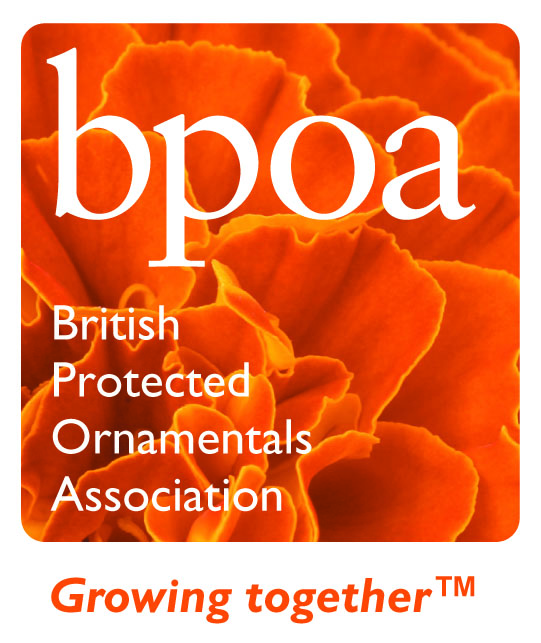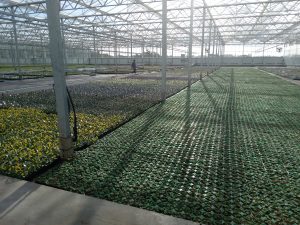Lovania and IPM
In its large scale production of ornamental plants, Lovania Nurseries uses Integrated Pest Management (IPM), managing pests naturally, which is a bio-friendly approach to growing that focuses on managing insects, weeds and disease through a combination of cultural, physical, biological and chemical methods. These methods need to be cost effective, environmentally friendly and socially acceptable. One of our main IPM strategies is the natural use of biological controls. These come under 3 categories predators, parasites and pathogens some of which are shown below.
Predators & Parasites
Aphidius mix
Aphidius colemani and Aphidius ervi are parasitoids of aphids which are very effective for the prevention and low-infestation management of various aphid species. These 2-3 millimetre mini-wasps are best used for preventing the establishment of more than 40 species of aphids. They can also tackle light to medium infestations. And, if established, they can adequately protect a crop throughout the season. They are difficult to spot on the crop and very unlikely to travel with the plants to the customer.

Aphidoletes
Aphidoletes aphidimyza is a midge whose larvae feed on over 70 aphid species, including the green peach aphid. It is the larval stage which feeds on aphids and may be spotted amongst aphid infestations. Adults are around 2.5mm in length whereas larvae are 0.3mm too 2mm long making them difficult to spot in crops.


Atheta beetle
Atheta coriaria can be used in crops such as herbs and ornamentals to protect against soil and compost pests. It is a generalist feeder, but adults and young stages are particularly good at feeding on the larvae of fungus gnats.

Amblyseius andersoni, Amblyseius californicus , Phytoseiulus persimilus
These 3 mites are used to control spider mites, all working in slightly different ways with different feeding habits. Each species has its preferred temperatures so using them together can be a very useful tool in controlling spider mites. They can be difficult to spot without a hand lens and are unlikely to be seen on harvested crops as they prefer temperatures of >15 degrees.
A.cucumeris is a predatory mite that is useful for the prevention, control, and management of various thrips species. A. cucumeris are tough, flexible predators that happen to prefer thrips, mostly the immature thrips stages.

Amblyseius montdorensis, Amblyseius swirskii
A.montdorensis is a predatory mite that feeds on many types of small arthropod prey and pollen. It is ideal for preventive control of whitefly and thrips in greenhouses. A.montdorensis is active at a broader range of temperatures than other predatory mites, making it perfect for controlling pests in challenging environmental conditions. A.swirskii is similar but needs slightly higher temperatures to perform effectively.

Steinernema kraussei
Steinernema kraussei is an entomopathogenic nematode (EPN: EPNs possess many desirable characteristics, such as searching ability of hosts, safety to nontarget organisms and the potential to survive in the environment. Nematode-based commercial products have become available for use against several pests all over the world during the past decade), which is supplied as infective juveniles that seek out their host. It is used to control black vine weevil larvae in ornamentals and berries. These nematodes can only be found with a strong microscope due to their size.

Encarsia formosa, Eretmocerus eremicus.
These 2 parasitic wasps control the younger larvae of glasshouse whitefly and tobacco whitefly by host feeding and the older larva of whitefly by parasitism. The wasps are approximately 0.6mm long and are unlikely to travel on the crop once harvested.
Pathogens
Bacillus thuringiensis
Bacillus thuringiensis (Bt) is a natural occurring, soil-borne bacteria that has been used since the 1950s for natural insect control. Agree is a biological insecticide specific for use against the lepidopterous larvae. Agree WG must be eaten by the larvae to be effective.

Other biological products we use
PRESTOP is a biological fungicide for the control of root diseases Pythium, Fusarium, Phytophthora and Rhizoctonia, as well as for the control of the Botrytis grey mould. It is based on the Gliocladium fungal strain J1446 which colonizes effectively the roots and foliar parts of plants preventing the attack of plant diseases.
T34 (Trichoderma asperellum) is a bio-fungicide for the reduction of Fusarium oxysporum f.sp. dianthi on carnations (Dianthus species) as well as other diseases including root rots and botrytis. The active ingredient is the beneficial fungus Trichoderma asperellum strain T34.
Met52 is a granular soil applied contact bio-insecticide that provides annual plant protection, from vine weevil and is effective against all larval stages of Black Vine Weevil when applied shortly before eggs are laid. Met 52 contains a specific strain of a natural insect pathogenic fungus. This is used as a replacement for Exemptor, a neonicotinoid which we can no longer use at Lovania.
As well as all the above, by managing pests naturally, we are minimising our chemical use in general by spending more time ‘scouting’ for early signs of potential problems, whereas in the past, we would spray whole blocks as a precaution. We also rely heavily on natural enemies populating the crops. Below are some of the other beneficial insects people might find on plants that have been grown in an IPM system. None of the insects in this text are harmful to humans, furthermore it is unlikely people will come in to contact with most of them due to there preferred habitats and environmental requirements.
Modern growing- reducing reliance on pesticides…
The main objective for Lovania, in managing pests naturally, is to minimise the use of pesticides on the nursery with an aim to stop their use completely in the future. Over the last few years, we have reduced our pesticide use by around 80 percent. And where pesticides are used, they are used as spot treatments where other methods have failed or simply would not be effective. We have noticed a lot more beneficial organisms coming into the greenhouse year by year due to the cleaner environment which is free from the long-lasting insecticide residues. We just need people to work with us in creating this more environmentally friendly approach to growing and be aware that there might be a few aphids or other pests on their plants. However, that plant will certainly be free from nasty pesticides and more than likely full of beneficial organisms looking for their next meal!
The author…

Steve Massam MHort (RHS) FACTS, has worked in a number of nursery roles and has been with Lovania Nurseries Ltd since 2013. He has studied for his Master of Horticulture qualification with RHS whilst working and was awarded the BOA/ Peter Seabrook bursary in 2015. He has just completed the first year of an MSc in Integrated Pest Management at Harper Adams University.
He is now Grower/ production Manager, responsible for many aspects of plant production but focussing on Integrated Pest Management (IPM) techniques which are reducing the company’s reliance on conventional chemical controls.
Lovania Nurseries
Lovania was founded in 1980 by Len, Keith and Celanie Ball. The name Lovania is taken from the last ship that Keith’s father, Len was stationed on during WWII. Because HMS Lovania was one of the few ships that wasn’t sunk during action in the Mediterranean, Keith decided it was a good name for the new business.
Lovania Nurseries Ltd is a family concern, producing ornamental plants on an area of 42 acres on 12 sites in Tarleton, Preston, Lancashire and surrounding villages. https://www.lovania.co.uk/#home
We thank Bioline AgroScience and Certis for the use of the images and text in this article.



